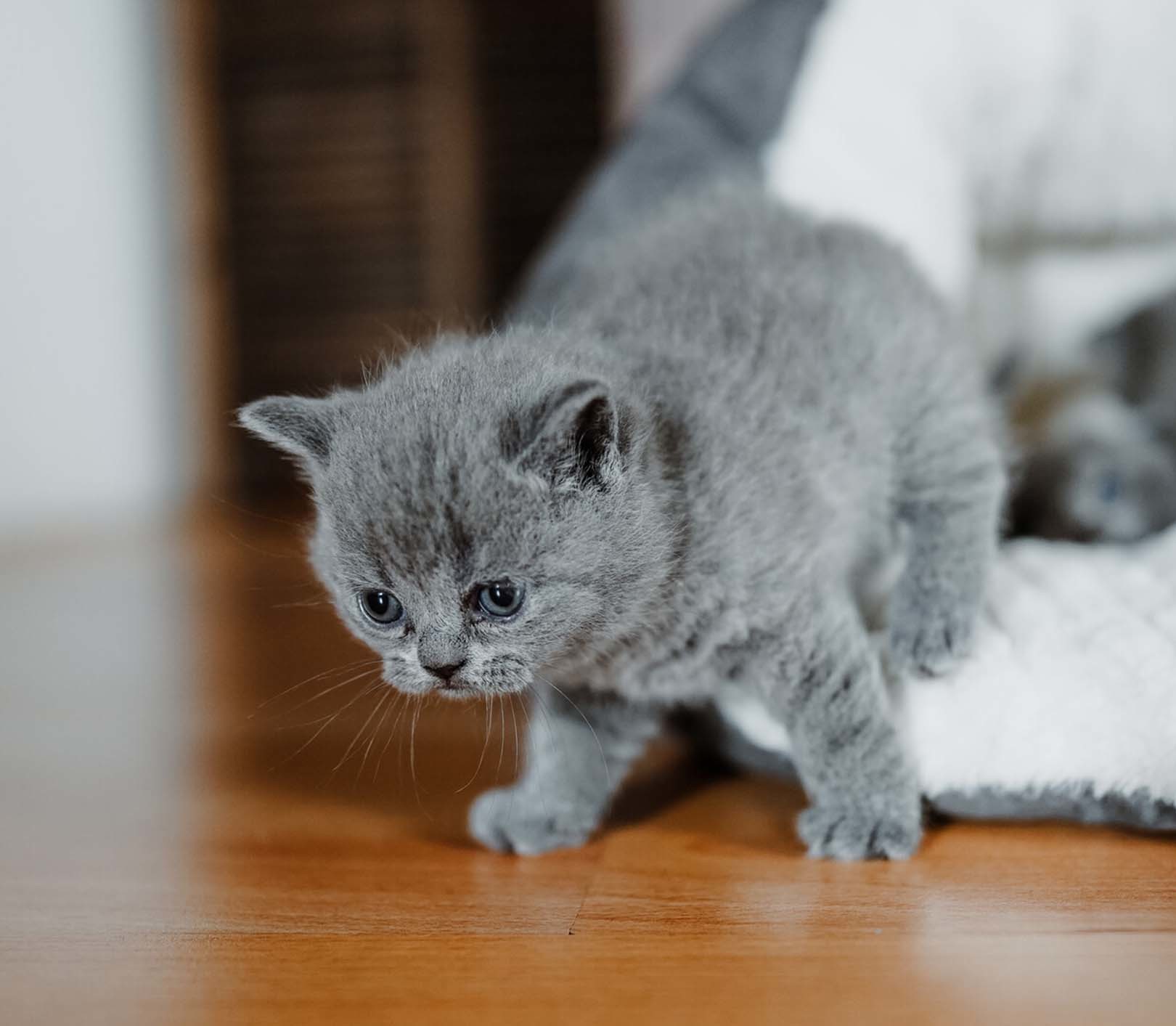Housetraining your cat: How it works
House-trained in 6 steps: How it works
Cuddling, playing and romping around are the pleasant aspects of keeping cats, but many associate housetraining with work and tedious training. But in fact kittens imitate the behaviour of their mother cat and thus usually learn to use the litter tray at an early age. However, if a baby cat has been separated from its mother too early, for example, or was born on a farm or has lived in a shelter, it may have missed this step. Therefore, cat training in this area is now up to you. What is especially important: Do not force your cat and do not use punishment or violence!
We explain how your velvet paw can become house-trained in 6 steps:
1. The right litter tray:
First of all, you need the right litter tray: at best, it should be about 1.5 times the size of your cat. For old, less mobile animals as well as for kittens or particularly small breeds, a shallow bowl is suitable. The material should be antistatic and easy to clean.
Our tip: For example, there are litter trays with lids, automatic litter trays or litter trays with flaps. If you have the impression that your cat doesn't like to use the model you bought, try a different version - maybe it will work better.
2. The right cat litter:
The right cat litter with which you fill the litter tray should not be underestimated. For kittens, it's best to use non-clumping hygienic litter. For your adult cat, you can later switch to practical clumping litter, which you can easily clean of the moisture-bound litter balls every day. One thing to remember: even though scented litter is more pleasant for your nose, it may put your cat off. So it's better to test it first and have a substitute ready in case of emergency.
3. Get to know the litter tray:
In the first few days, your kitten will probably need a lot of rest. Ideally, place the litter tray in a room with the other cat accessories so that your kitten has a short way to reach it. This way, your kitten can withdraw sufficiently and explore the litter tray with curiosity.
4. Help your kitten:
Kittens in particular find it difficult to go to the toilet at first. Therefore, it is best to carry them to the litter box after their meals and sleeping hours. Do not clean it afterwards. This way, your baby cat will retain the familiar smell, which will help her to bond.
5. Determine the place for the litter tray:
Once your kitten understands that it needs to go to the litter box, you can place the litter box in its permanent future location. Note that the litter tray must always be accessible to your kitten. It's best to choose a room where the door is always open. A quiet room (i.e. not a passageway) that is used as a "quiet place" is ideal. In a house with several floors, it is advisable to install two litter trays.
6. If something does go wrong:
If a mishap does occur outside the litter box, you should remove the remains and the smell as quickly as possible. The best way to do this is to use a solution of water, alcohol and vinegar in equal parts. The aroma of this mixture smells unattractive to your cat and it will usually not visit the place again.
Our tip: If your cat only uses a certain place outside the litter tray, position the litter tray there in the future. Your cat probably doesn't like the current location of the litter tray.
Uncleanliness: Why is my cat suddenly no longer house-trained?
If your cat used to go to the litter box without any problems and has recently started preferring one or more other places, this may be due to trivial reasons or may indicate serious problems. These are possible reasons why your cat is no longer house-trained:
- you have chanced the litter
- you no longer clean the litter tray regularly or thoroughly enough
- you have changed the litter tray or bought a new one
If you have not made any changes to the litter tray, the cause may be a change in daily routine, e.g.
- birth of your child
- your new partner
- more visitors
- building sites in the house (e.g. renovations, refurbishments)
- new furniture
If you can also rule out such causes because you have not changed your daily routine or the environment, it is better to visit your vet so that he can rule out any illnesses your little tiger may have. If your cat is not yet neutered and has just reached sexual maturity, this could also be a reason for uncleanliness.
Conclusion: If you buy the right accessories and have a bit of intuition when choosing the location of a litter tray, you are already helping your cat to become house-trained. Don't worry too much if your cat regresses - often small changes are enough to restore harmony. How did you finally get your cat house-trained? We look forward to hearing your story!
